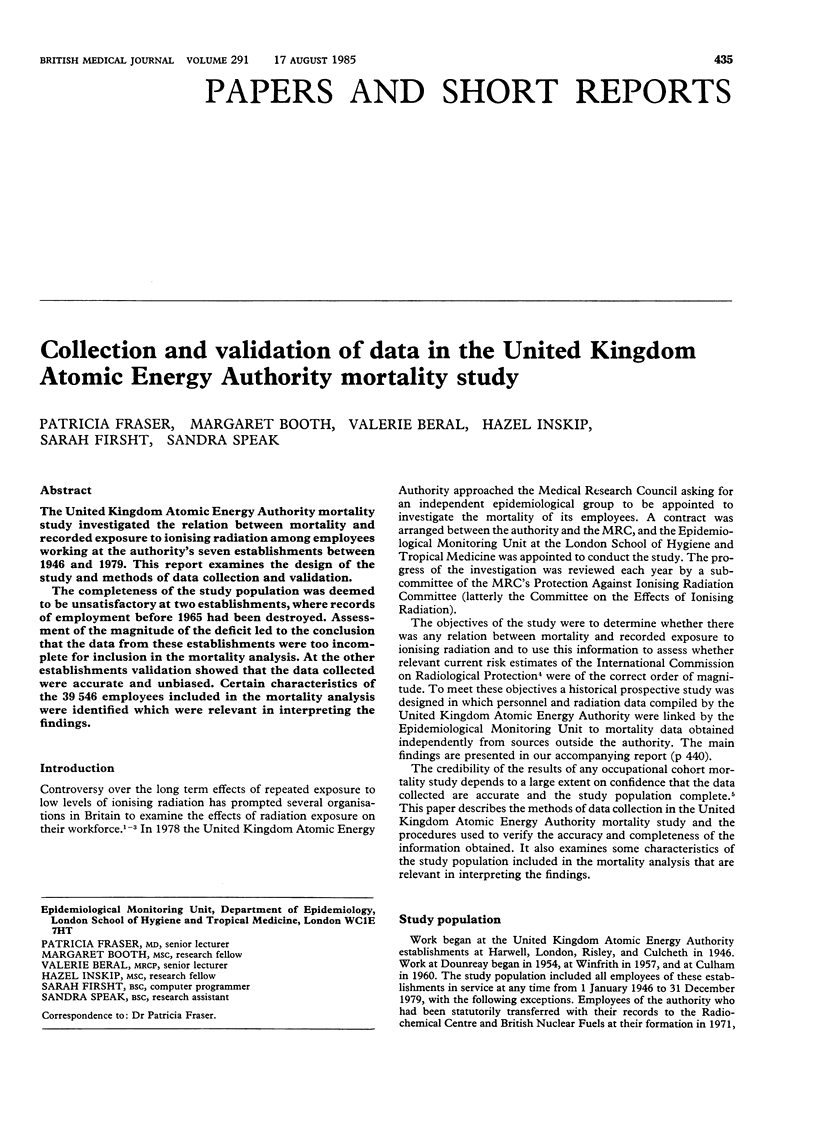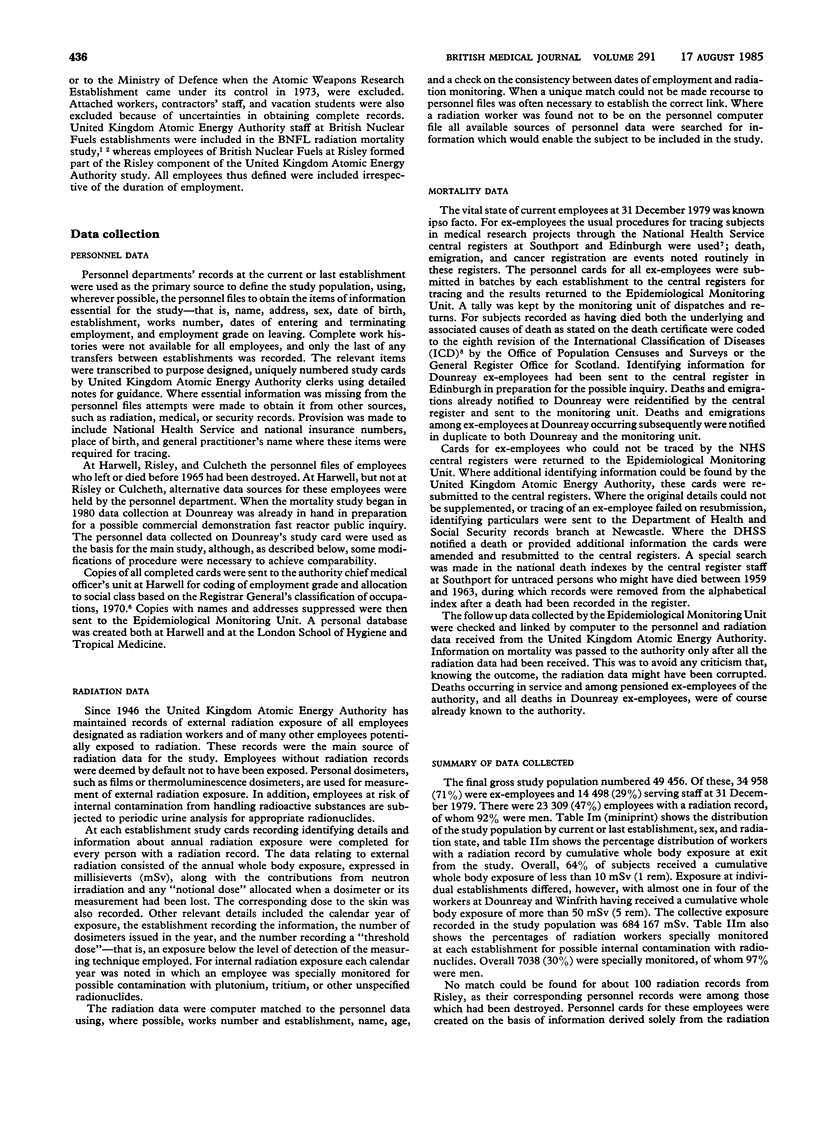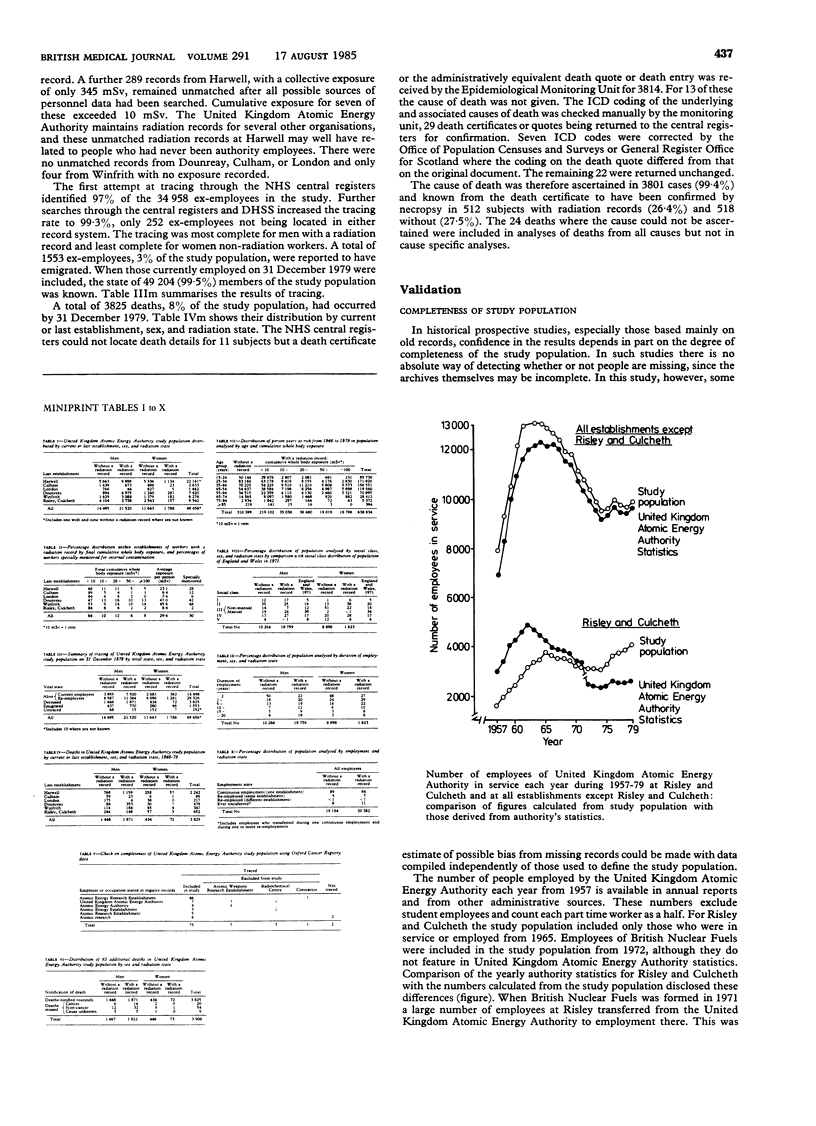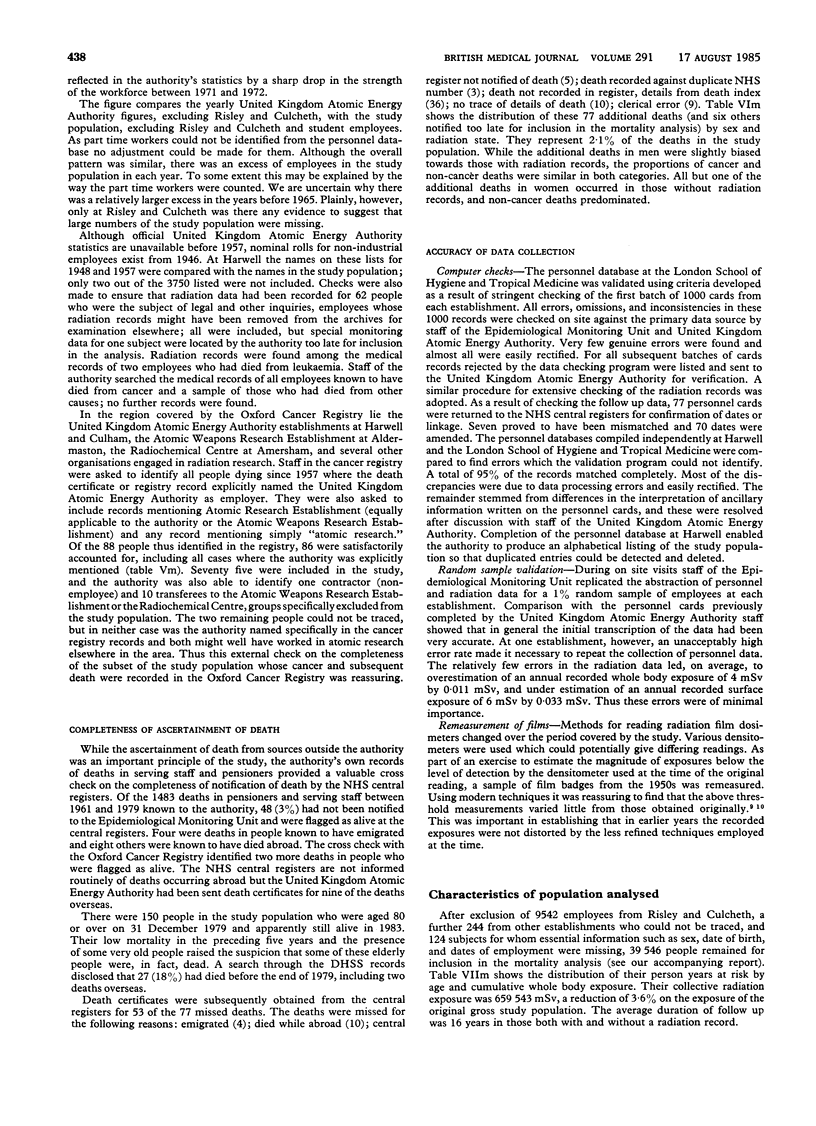Abstract
The United Kingdom Atomic Energy Authority mortality study investigated the relation between mortality and recorded exposure to ionising radiation among employees working at the authority's seven establishments between 1946 and 1979. This report examines the design of the study and methods of data collection and validation. The completeness of the study population was deemed to be unsatisfactory at two establishments, where records of employment before 1965 had been destroyed. Assessment of the magnitude of the deficit led to the conclusion that the data from these establishments were too incomplete for inclusion in the mortality analysis. At the other establishments validation showed that the data collected were accurate and unbiased. Certain characteristics of the 39 546 employees included in the mortality analysis were identified which were relevant in interpreting the findings.
Full text
PDF




Selected References
These references are in PubMed. This may not be the complete list of references from this article.
- Fox A. J., Collier P. F. Low mortality rates in industrial cohort studies due to selection for work and survival in the industry. Br J Prev Soc Med. 1976 Dec;30(4):225–230. doi: 10.1136/jech.30.4.225. [DOI] [PMC free article] [PubMed] [Google Scholar]
- Marsh G. M., Enterline P. E. A method for verifying the completeness of cohorts used in occupational mortality studies. J Occup Med. 1979 Oct;21(10):665–670. [PubMed] [Google Scholar]


